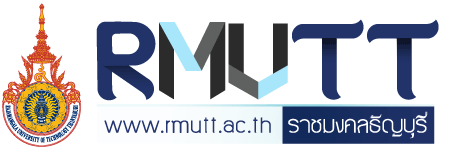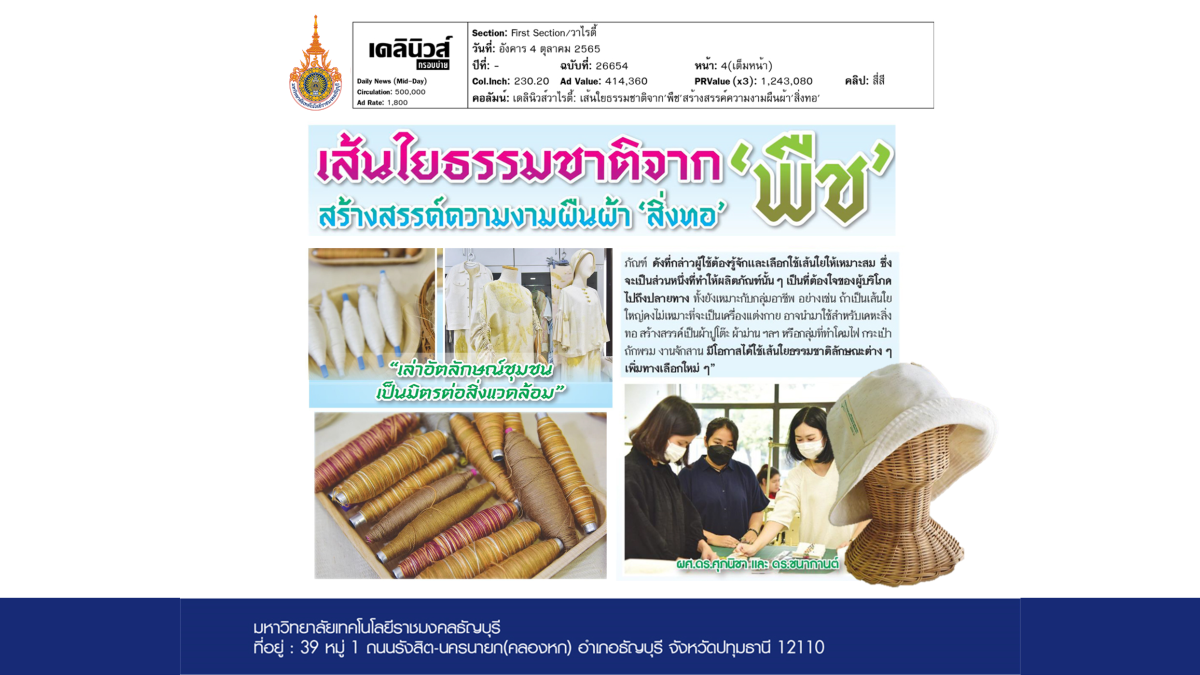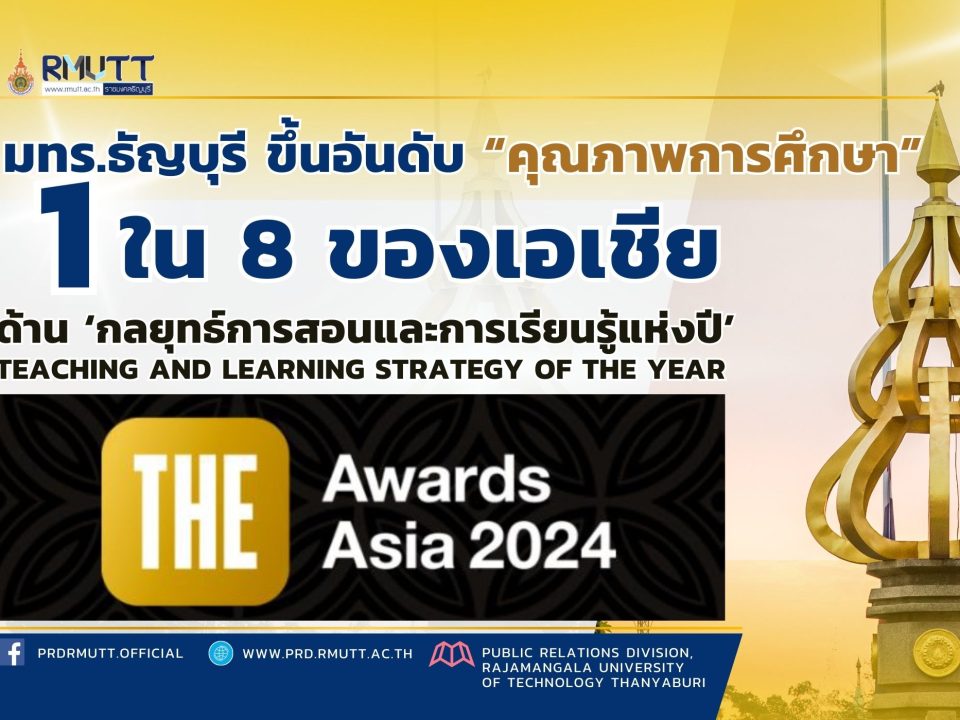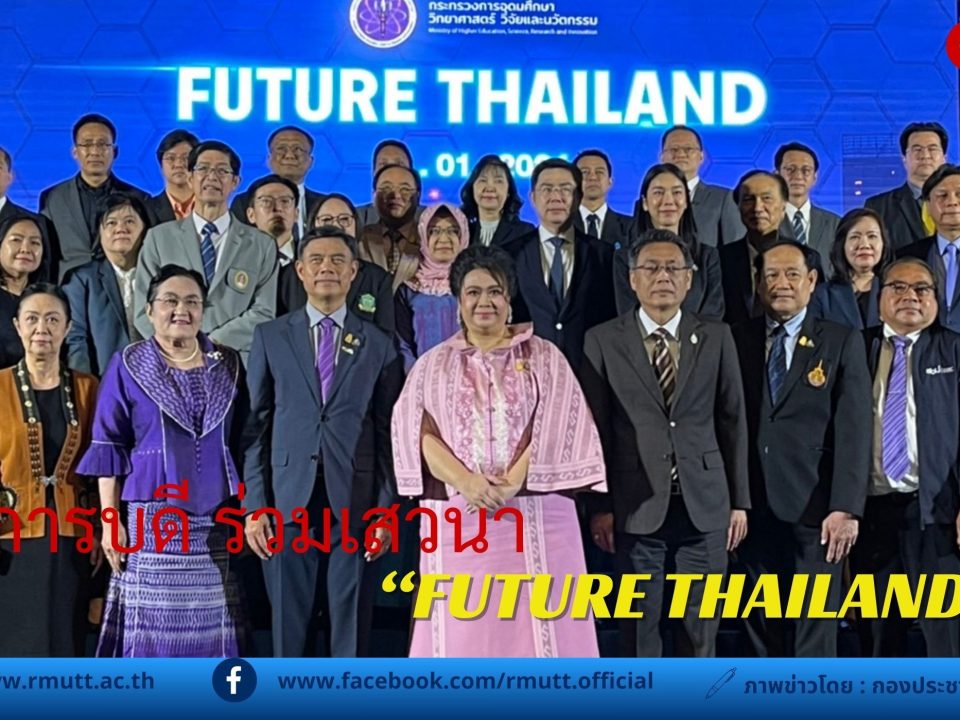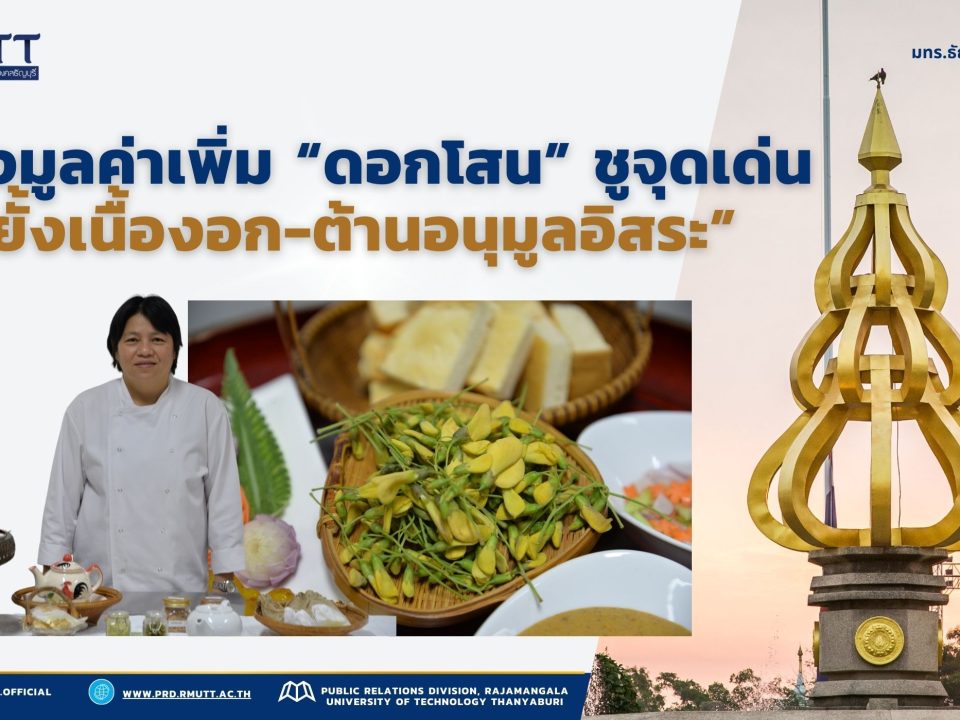
RMUTT SETS THE PACE FOR GENERATION-NEXT GRADUATE UP TAKE BY BUSINESS
29/09/2022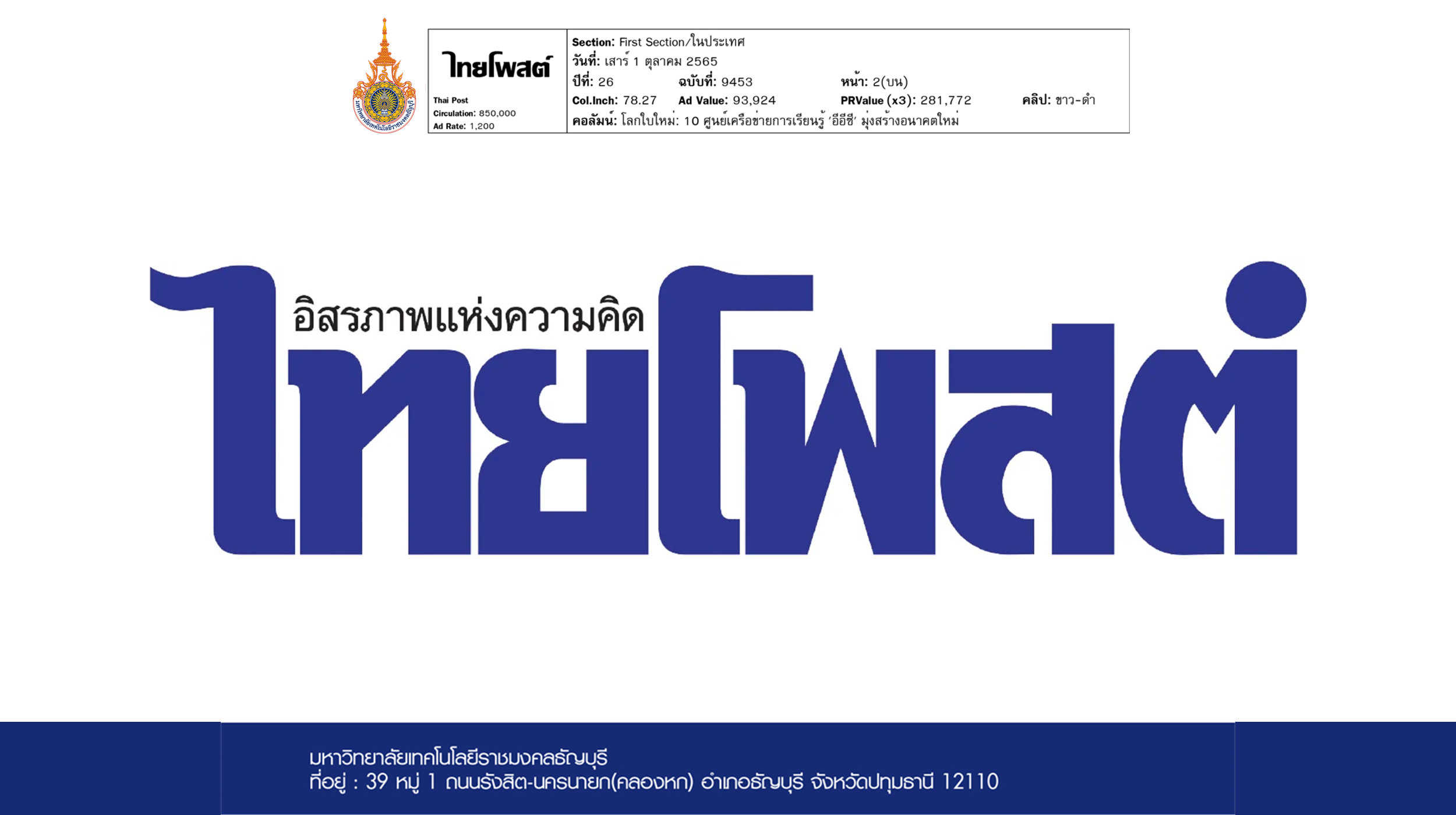
Colum The New World: 10 New ‘EEC’ Learning Centers for the Better Future
03/10/2022Daily News: Published on 4 October, 2022 by Pongpan Boonlert
Specially softy touch surface and effective air flow to promote fresh, dry and comfortable skin, natural textile fiber is viewed as an excellent material for producing high-quality textile products and textile fabric. Fabric properties and their influence on textile product design, production processing, and product acceptance are absolutely important. Let’s get to know some fascinating facts on agricultural waste biomass ‘water hyacinth’ and ‘banana leaf’ which are repurposed into eco-friendly natural fibers. Dean of Home Economics Technology, Rajamangala University of Technology Thanyaburi, Assistant Professor Dr. Sakorn Chonsakorn will help simplify what natural and synthetic textile fibers are.
“Increasing demand for natural fibers, such as cotton and silk for textile production is likely to put into the market growth. Cotton fibers, regarded by many as ‘King of Natural Fiber’, is classified as short, white fiber; however, lint and fiber of tetraploid cottons occur in colors ranging from white to various shades of brown. Currently, new and improved cotton varieties have been development in Thailand and throughout the world. Cotton-made clothing is comfortable, breathable, and soft. On the hand, silk is known as the Queen of all textile fibers because of its sheen and luster. Eri silk is one of the most beautiful and durable fibers which comes in different colors depending on what Eri silkworms eat. In textile industry, silk is classified into two types: Cultivated silk and Wild silk.
“A special type of cultivated silk made by silkworms that was exclusively fed on mulberry, “Mulberry silk is known for its special properties including luster, long-thread, and reflectibility. Unlike cultivated silk, wild silk creates shorter-fiber ‘slubbier’ fabric with soft touch and lightweight. Similar in physical properties, silk is derived from animal, which cotton is plant-based.”
Dean, Sakorn Chonsakorn further explained about the use of short and long fiber, “When you look at fabric made from short fiber, you will see grains of pile located inside, making your skin feel warm, comfortable, and soft when touched. Unlike short thread-made fabric, you would not see this type of grain on long-threat fabric. Because of its excellent heat retention and moisture retention properties, they are used for making shiny fabrics. In addition, long fiber when compared the short one tends to provide higher durability and better spinning property. As you can see it’s not that easy to manufacture good fabric from either plant-based fiber or the animal-based one.
“Technically in Textiles, filament fiber is regarded as the smallest visible unit of textile manufacture. When turns into fiber into threads, they could be used to create textile yarns and fabrics. To create exquisite and valued textile products, going back to the basic components or building blocks known as fibers is important. As mentioned earlier, natural fabrics is extensively used in clothing industry since they are durable, eco-friendly, and long last. Many international researchers have shown a lot of interest in converting the agricultural biomass waste into fabric to promote environmental protection awareness including Thailand’s. Topics on repurposing agricultural biomass waste into value natural-made textile products are frequently mentioned, plant-based materials in particular.” Dr. Sakorn added: “For the last couple of decades, Thai researchers have been studying to transform different kinds of plant-based waste which include lotus, toddy palm, pineapple, coconut, banana, water hyacinth, etc. into valued textile products so as our researchers from the Faculty of Home Economics Technology, RMUTT. We have been conducting researches on these biomass waste, water hyacinth and banana in particular. Currently, we are attempting to add values to these products through design, fiber treatment, and transfer the knowledge that we have to the local community. However, even if we could help local community create better textile product, without customer acceptance our goal could not be achieved. We need to find out what exactly the consumer wants. You can not deny that there are several factors influencing our objective including customers and producers. You must look at what expertise do the locals have. Sometimes, you have to find something that match their career demand. For clothing maker, a supply of large fiber material does not make since this type of fiber can only be transformed into household-textiles including table sheets, curtains, or something else that’s unrelated to clothing including lamps, bags, knitting and weaving products. Thus, giving the right knowledge to the right person with the right customer is yet crucial.” In addition, creating the sense of natural protection including preservation of natural resources and reduction of waste could help promote the use of plant-based textile product. Right now, researches on fibers made from water-hyacinth and banana are our focus, since these two fibers create very low production cost and of course, can be found anywhere around us. Interestingly, our researcher attempts to compare fibers taken from water hyacinth and compared them with cotton. The results are shockingly interesting. They tended to have higher durability and lower weight with hollow feature making them very breathable. But when compared banana fiber with water hyacinth, they are even more durable and reflective; however, water hyacinth possessed softer texture.
Regarding repurposing of water hyacinth waste to naturally-made fabric, Assistant Dean for Strategy and Planning of Home Economics Technology Asst. Prof. Supanicha Srivoradechpaisarn said: “The reason why water hyacinth can be seen as a raw material for the manufacture of clothing since it is pure natural with ranging of colors from white to brown. Anyone who loves eco-friendly products would definitely admire the 100% natural beauty of water hyacinth made fabric. Not only would you see water hyacinth turn into fabric, but it can also be turned into various products including necktie, bag, dolls, etc. You can also create beautiful fabric patterns on these products by eco-printing technique with natural ‘blue’ indigo dye. Water hyacinth thread is so strong that you can spin them into small fiber making them commercially preferred. Regarding the incredible properties of banana fiber, Vice Dean for Research and Development, Dr. Chanakarn Ruangnarong: said, “Concerning our translational research, we will be improving banana fiber properties by treating the fibers to be softer and waxier. Beautiful fabric pattern like plant leaf, banana leaf, and flower will also be eco-printed to relate from what fabric is made. We as researchers also attempt to pass on our knowledge to the local community so they could make use of their local and natural raw material like banana to increase their income. Not only we could turn banana fibers into fabric, parts like leaf, stem, and roots could also be turned into organic fertilizers after banana tree is chopped off. All in all, almost every parts of banana are useful, either you could repurpose them into strong and durable fabric or they could also be converted into reflection of local art design of fabric pattern making them unique and yet useful for the people and friendly to environment.”.




